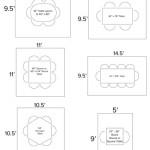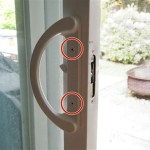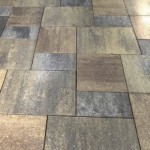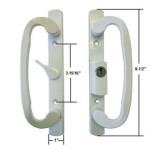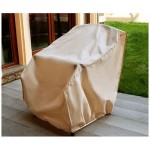Pea Gravel Over Concrete Patio: A Comprehensive Guide
The prospect of revitalizing an existing concrete patio often presents a challenge. Concrete, while durable, can become unsightly due to cracking, staining, or general wear and tear. Opting for a complete removal and replacement is a significant undertaking, involving considerable cost and labor. An alternative, and often more practical, solution is to install pea gravel over the concrete surface. This method offers a cost-effective, aesthetically pleasing, and relatively straightforward way to transform an aging patio into a refreshed outdoor space.
Pea gravel, characterized by its small, rounded stones, typically ranging in size from 1/8 inch to 3/8 inch in diameter, provides a natural, textured surface. Its smooth edges make it comfortable to walk on, and it comes in a variety of colors, allowing for customization to suit individual preferences and existing landscape design. Covering a concrete patio with pea gravel can mask imperfections, improve drainage, and create a more inviting outdoor environment.
Advantages of Using Pea Gravel Over Concrete
Employing pea gravel as a patio surfacing material offers several notable advantages, particularly when applied over an existing concrete base. These benefits contribute to the overall functionality, aesthetics, and cost-effectiveness of the project.
Cost-Effectiveness: Compared to the expense of removing and replacing a concrete patio, applying pea gravel is significantly more economical. The cost of pea gravel itself is generally low, and the labor involved in installation is minimal, often making it a viable DIY project for homeowners. This cost-effectiveness allows for significant improvement in the appearance of the patio without incurring excessive financial burden.
Improved Drainage: Concrete, being a solid surface, can suffer from water pooling, leading to potential issues like algae growth or ice formation in colder climates. Pea gravel, on the other hand, allows water to drain through it, reducing the risk of these problems. The spaces between the pebbles facilitate rapid water infiltration, effectively managing rainwater and preventing standing water on the patio surface. This improved drainage contributes to a safer and more comfortable patio environment.
Aesthetic Appeal: The natural appearance of pea gravel offers a visually appealing alternative to plain concrete. Its varied colors and textures can complement existing landscaping and create a more inviting outdoor space. The rounded shape of the pebbles provides a softer look compared to the hard, sharp edges of concrete, contributing to a more relaxed and natural atmosphere. Furthermore, the gravel can be arranged in different patterns or combined with other landscape elements like stepping stones or planters to create a customized design.
Ease of Installation: Installing pea gravel over concrete is a relatively simple process that can be completed with basic tools and minimal experience. Unlike more complex patio renovations, this project requires no specialized skills or heavy equipment. The ease of installation allows homeowners to undertake the project themselves, further reducing costs and providing a sense of accomplishment.
Low Maintenance: Once installed, pea gravel requires minimal maintenance. Occasional raking to redistribute the gravel and remove debris is typically all that is needed. Unlike grass or other landscaping materials, pea gravel does not require watering, mowing, or fertilization. This low-maintenance aspect makes it a practical choice for homeowners who want to enjoy their patio without spending excessive time on upkeep.
Concealing Imperfections: A primary benefit of this method is its ability to conceal cracks, stains, and other imperfections in the existing concrete patio. The pea gravel layer effectively masks these flaws, creating a uniform and aesthetically pleasing surface. This is particularly useful for older patios where the concrete has deteriorated over time, providing a cost-effective way to revamp the appearance without resorting to costly repairs or replacements.
Preparing the Concrete Patio for Pea Gravel
Proper preparation of the concrete patio is vital for ensuring a successful and long-lasting pea gravel installation. Neglecting these steps can lead to problems like weed growth, uneven gravel distribution, and decreased drainage effectiveness. The preparation process involves cleaning the concrete surface, addressing any significant damage, and installing a suitable landscape fabric.
Cleaning the Concrete: The first step is to thoroughly clean the concrete patio. This involves removing all debris, such as leaves, twigs, dirt, and loose concrete particles. A stiff broom can be used for initial sweeping, followed by a pressure washer to remove stubborn stains and built-up grime. If there are particularly persistent stains, a concrete cleaner can be applied according to the manufacturer's instructions. This thorough cleaning ensures that the landscape fabric will adhere properly to the concrete surface and prevents organic matter from decomposing beneath the gravel layer, potentially leading to unpleasant odors or weed growth.
Repairing Cracks and Damage: While the pea gravel will conceal minor imperfections, it is crucial to address any significant cracks or damage to the concrete. Larger cracks can allow water to penetrate, potentially worsening the damage over time. These cracks should be filled with a concrete crack filler, following the product's instructions for application and drying time. Similarly, any loose or crumbling concrete should be removed and patched with a concrete patching compound. Addressing these issues proactively will help to prevent further deterioration of the concrete base and ensure the longevity of the pea gravel installation.
Installing Landscape Fabric: A crucial component of this project is the installation of landscape fabric. This fabric acts as a barrier between the concrete and the pea gravel, preventing weeds from growing up through the gravel and also preventing the gravel from settling into any existing cracks in the concrete. Choose a high-quality, durable landscape fabric that is specifically designed for outdoor use. Start by laying the fabric over the entire concrete surface, overlapping the edges by at least 6 inches. Secure the fabric in place using landscape staples spaced approximately 12 inches apart. Ensure the fabric is taut and wrinkle-free to prevent uneven gravel distribution. The landscape fabric is essential for maintaining a weed-free and stable pea gravel surface.
Installing the Pea Gravel
The installation of the pea gravel itself is a relatively straightforward process, but it's important to take certain steps to ensure a uniform and aesthetically pleasing result. This includes choosing the right amount of gravel, distributing it evenly, and considering edging options.
Determining the Amount of Pea Gravel: Before purchasing pea gravel, accurately calculate the area of the concrete patio. This will allow for accurate estimation of the volume of gravel needed. Multiply the length of the patio by its width to determine the square footage. Then, decide on the desired depth of the gravel layer. A depth of 2 to 3 inches is generally recommended for optimal coverage and drainage. Use a gravel calculator online or consult with a landscaping professional to determine the cubic yards of gravel needed based on the square footage and desired depth. It's always advisable to purchase slightly more gravel than estimated to account for settling or loss during installation.
Distributing the Pea Gravel: Once you have the required amount of pea gravel, begin distributing it evenly over the landscape fabric. Use a wheelbarrow to transport manageable loads of gravel and dump them in various locations across the patio. Then, use a rake to spread the gravel evenly, ensuring a consistent depth across the entire surface. Pay particular attention to corners and edges, ensuring that the gravel is distributed uniformly in these areas. Avoid dumping large piles of gravel in one spot, as this can create uneven distribution and make it difficult to achieve a smooth surface.
Considering Edging Options: While not strictly necessary, installing edging around the perimeter of the pea gravel patio can enhance its appearance and prevent the gravel from migrating onto adjacent areas like lawns or flower beds. There are various edging options available, including plastic edging, metal edging, wood edging, and stone edging. Choose an edging material that complements the style of your patio and landscaping. Install the edging according to the manufacturer's instructions before spreading the pea gravel. Edging provides a clean, defined border and helps to contain the gravel, keeping it neatly within the designated patio area.
Leveling and Compaction: After distributing the pea gravel, use a rake to ensure a level surface. Gently compact the gravel with a hand tamper or a roller. This will help to settle the gravel and create a more stable walking surface. It's important to avoid over-compacting the gravel, as this can reduce its drainage capacity. The goal is to create a firm but porous surface that allows water to drain freely.
By following these preparation and installation steps, homeowners can successfully transform their existing concrete patios into attractive and functional outdoor spaces using pea gravel, avoiding costly and time-consuming concrete replacement.

How To Build A Pea Gravel Patio Farmhouse On Boone

What You Need To Know Before Creating A Pea Gravel Patio

Residential Concrete Patio Extension Franklin Tn Tristar

Diy Pea Gravel Patio With Pavers Love Renovations

Diy Pea Gravel Patio With Pavers Love Renovations

How To Make A Pea Gravel Patio In Weekend The Handyman S Daughter

How To Make A Pea Gravel Patio In Weekend The Handyman S Daughter

Redeeming Hampton Diy Pea Gravel Patio For Under 200

How To Stabilize Pea Gravel Driveways Walkways Truegrid Pavers

What To Consider Before Installing A Pea Gravel Patio



